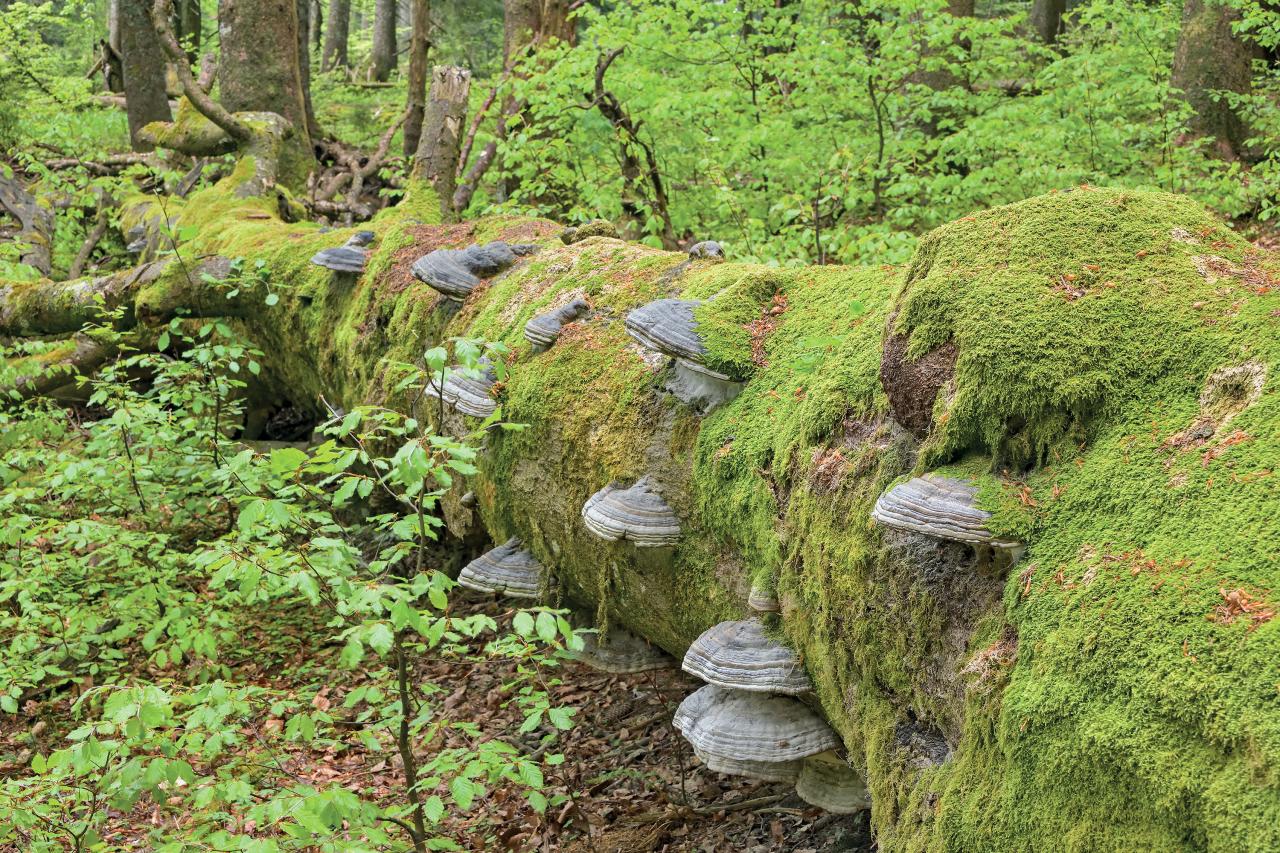1994
June 30: Cessation of forestry use in the area
1996
Discovery of two globally unknown species of spring snails
1997
July 25: Opening of the Kalkalpen National Park

1998
First documented evidence of lynx
Proof of otter: dead find on the Hengst Pass
1999
Discovery of the Klara giant cave in the Sengsengebirge with the largest stalactite in the Northern Alps
2000
March 30: The first lynx photo of male lynx "Klaus" is taken with a photo trap
Discovery of native brown trout stocks
2001
Detection of 916 vascular plant species according to the natural area inventory
2002
August 12/13: Flood of the century; 30 kilometers of forest roads were destroyed
Rediscovery of the cave ground beetle(Actaphaenops muellneri) in the Rettenbach Cave, first recorded in 1970
2003
August 15 to 13: 14-hectare forest fire at Hagler on the south side of the Sengsengebirgs
2004
May 25: First brown bear photos taken in the Sengsen Mountains
2005
72% of the national park area is forest wilderness - no more silvicultural measures take place here
Extremely snowy winter with avalanches of the century
2006
Another snowy winter with avalanches of the century, 569 cm of snowfall on the Hengst Pass between December 2005 and April 2006
2007
January 19: Hurricane Kyrill brings 36,000 solid meters of windthrow to the national park, the proportion of deadwood increases
July 13: Breeding evidence of wallcreeper
To reduce motorized traffic, one third of the forest roads have been closed since 1997
2008
Storms Paula (28 January) and Emma (1 March) caused 16,000 solid cubic meters of windthrow and a lot of deadwood in the national park
2009
Evidence of over 1,500 butterfly species - nowhere else in Austria are so many butterflies known
February 24: Extremely snowy winter. Huge avalanches of dust thunder down from the northern flanks of the Sengsen Mountains
After a warm summer, bark beetles infest 20,000 solid meters of standing spruce in the forest wilderness area. The proportion of deadwood increases to 15.5 solid meters per hectare by the end of the year
2010
June: First record of the scarlet tiger beetle(Cucujus cinnaberinus) relict of the primeval forest
2011
On May 9, the young female lynx "Freia" and on December 13, the male lynx "Juro" are relocated from Switzerland to the national park
2012
May: First lynx offspring in 150 years. Lynx "Freia" gives birth to three lynx cubs
July: Discovery of the rare green goblin moss - an important European protected property
September: 520-year-old beech tree discovered in the Hintergebirge mountains
2013
March 25: Release of the lynx "Kora" in the national park
2015
Criminal trial and final conviction of two poachers for the deliberate shooting of lynx B7 and lynx "Juro"
2016
Detection of 26 primeval forest relict beetle species in the Kalkalpen National Park
2017
March 17: Release of the lynx pair "Aira" and "Juri" in the national park
Four breeding pairs of golden eagles detected in the national park
The ancient beech forests at Kalkalpen National Park become Austria's first UNESCO World Heritage Site
2018
Lynx "Luzi" leads a cub
2019
546-year-old beech tree discovered in a primeval forest area in the Sengsengebirge - the oldest known beech tree in the Alps
Evidence of the red-necked dusky beetle(Phryganophilus ruficollis), the only confirmed population in the Alpine region, one of the rarest beetle species in Europe
2020
Confirmation of 570 wood-dwelling beetle species or beetle species dependent on living and dead wood.
2021
Extraordinarily old fir tree, 407 years old, discovered in the Sengsengebirge.
July: Heavy rainfall almost completely sweeps away the remains of the former Sitzenbachklause in the Hintergebirge.
2022
After an absence of 35 years, a large population of the golden fritillary butterfly has been discovered again.
First record of the tree dormouse(Dryomys nitedula), a species within the dormouse family, which is listed in Annex II of the Habitats Directive (EU). Tree dormice are considered to be extremely secretive forest dwellers and are therefore very rarely observed.
10 December: Male lynx "Norik", who comes from a breeding program in the wild cat village of Hütscheroda in Germany, is relocated to the national park. Detection of five adult lynx in the area (three males, two females);
The proportion of deadwood in the National Park Forest has more than doubled since 1995 from 16 to 34 solid cubic meters per hectare.
2023
First record of the Southern Alps grasshopper (Chorthippus eisentrauti) on the south side of the Sengsengebirge. An endemic species that is more widespread on the southern edge of the Alps, but only occurs on a very small scale in the Northern Limestone Alps as an ice age relict and has so far only been confirmed at a few locations.
First discovery of the previously unknown, endemic stonefly species Dictyogenus weigandi



